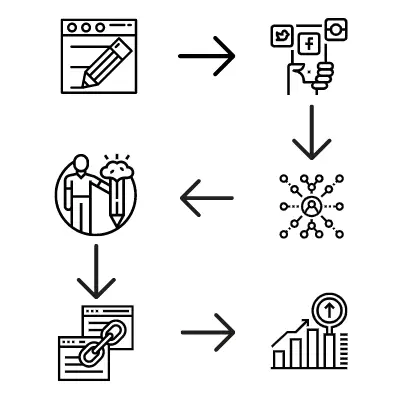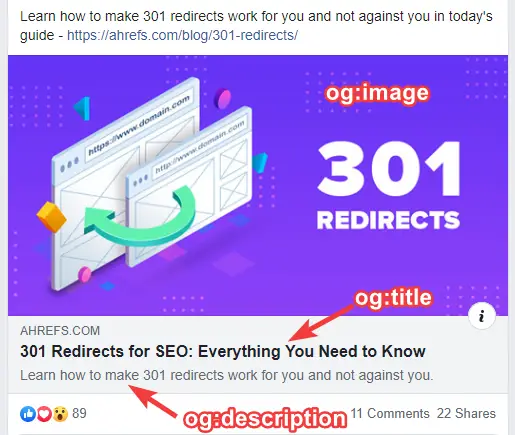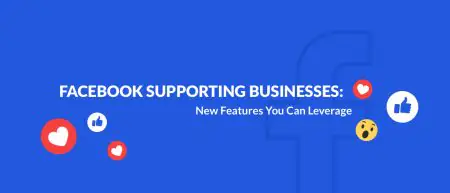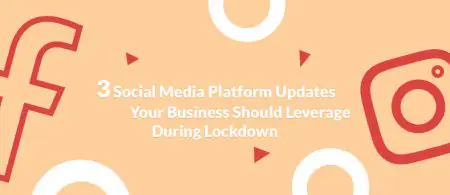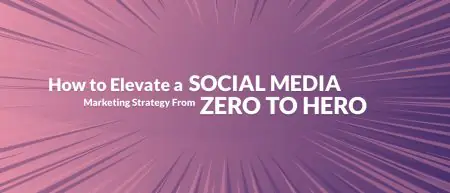How to Combine SEO and SMM: 5 Actionable Tips

Digital marketing lead at PromoRepublic
According to the statistics, there are around 3.5 billion social media users nowadays, and this number shows the rapid growth of 13% per year. At the same time, there are around 75,000 Google searches made each second, and this number grows as fast as our population does.
It becomes easier to pick a needle out the haystack than to find a person who doesn’t use search engines and social media in everyday life. If you want to successfully reach your target audience through both of these channels, you should definitely dig into social media marketing (SMM) and search engine optimization (SEO).
1. Why Both SEO and SMM Are Essential for Modern Businesses
Apart from statistics, there are also dozens of other reasons to take both these activities seriously. Listing all their pros may take hours, but here’s the main point.
Search engines are the main place where your potential customers might find you. Of course, you can still appear on the client’s radar through social media. Though when you want to purchase something (let’s say a new laptop) or master a new skill (for example, learn how to manage your socials) do you go to Facebook first or use Google? SEO is the process of making your site visible for your target audience when they google their needs.
Social media, above all, is a great way to connect with your customers and build a strong relationship. If your site is a place where you mostly sell to or speak to your audience, your socials, on the other hand, are made for two-way communication which is extremely important if you want to advance and keep your clients with you. SMM is the art of increasing your brand awareness through constant communication with your customers.
When it’s clear that both SEO and SMM are important, it brings us to the next question.
1.1. Does Social Media Affect SEO and Vice Versa?
There’s no doubt that your site’s performance does not affect the reach of your posts on socials directly, but there’s a constant debate over the influence of your social accounts activity on your search engine optimization.
There are various studies and experiments that prove a correlation between the number of social activity metrics (e.g shares, likes) and performance of web pages in search. Some experts like Neil Patel put social media in a list of search engine ranking factors.
However, if you look at the official documentation of search engines and statements of their representatives, you’ll get different answers.
As for Google, in 2014 a former head of the webspam team at Google Matt Cutts was asked whether Facebook and Twitter signals are a part of the Google ranking algorithm. In this video he answered that Google algorithm does not include any social signals simply because they cannot properly get and analyze them. Though, he still recommends using them actively to build your brand. A little vague response, but it’s common for Google.
Even though Google’s market share is around 90%, there are still other search engines that treat socials differently. One of them is Bing. In its webmaster guidelines you can easily find that social signals do have an impact on how you rank organically.
To sum up, I’d say that social media does affect your rankings in Google but definitely indirectly.
Produce great content on your site → share it in your socials → if you have wide social media reach and your content is good enough, it goes viral → other content creators see it and link to it from their sites → you get high-quality backlinks which are a major ranking factor → your rankings grow.
Let’s see how social media might help your SEO and vice versa.
2. Tips on Combining SEO and SMM
If you are using both organic search and social media, it’s important they complement each other. Here are 5 battle-tested tips on accomplishing this task.
2.1 Share in Socials to Get More Backlinks
Backlinks are one of the main ranking factors in most search engines. The more backlinks you have from high-authority websites, the better are your rankings.
All major social media websites like Facebook set the rel=”nofollow” attribute to all external outgoing links in order to prevent spam. Nofollow tells search engines not to follow and ignore the link. This means that backlinks you get from social media are not affecting your SEO.
Is social media useless for getting backlinks? Definitely no. In fact, it’s one of the best techniques. Let’s get back to the infographic above.
Social networks allow sharing your content to a wide range of people potentially interested in your content. If the content you produced is worthwhile, other content makers would love to put a link to it from their websites.
As an example, this tweet from Jonathan Jones became viral on Twitter (lots of influencers and even a Google representative left their comments and retweeted it) and his article got more than a hundred links from other websites.
Your task is to make sure your tweet or post in FB reaches the target audience. Here are some tips:
- Tag niche influencers who might be interested and ask their opinion. There’s a chance they will like it and share with their audience. Do not overuse this method since people don’t like being tagged regularly.
- Tag influencers you mentioned in your post. Did some great research using a certain tool? Tag their official page, they will like it. Besides sharing it with their users they may also add you to the media mentions page on their website if they have one.
- Repost to niche groups and communities. Become a regular participant of such groups. Like and repost others’ content, leave comments, get new connections.
2.2. Brand Mentions Also Matter
Brand mentions are definitely not as strong ranking factor as backlinks but they still are important part of algorithms of search engines. Social media is the best way to make a fuss about your brand.
“Basically, if you publish high-quality content that is highly cited on the internet – and I’m not talking about just links, but also mentions on social networks and people talking about your branding, crap like that. Then you are doing great.”
Google Webmaster Trends Analyst Gary Illyes (source)
- Track your brand mentions. It’s important to know where and by whom you are mentioned. Use tools like Social Monitoring to be aware of all mentions from socials.
- Reply from an official account every time people talk about you. Help your clients in public to grow their loyalty and show that you’re on top of your game.
- Work with negative mentions. People often complain on socials, try ironing out all the troubles when they occur and show your followers that you care. Be fast, helpful, and positive.
2.3. Increase Brand Awareness to Boost Click-Through Rate from Organic Search and Lower Bounce Rate
When someone conducts a search on Google, it’s not enough to be on the first page of search results. While position certainly matters the most (the first result gets around 30% of clicks and the tenth only around 3%), there’s also such a thing as brand awareness which helps the user to make a decision.
If you have strong brand awareness, you most likely will get more clicks from search results, even despite not being the first on the search results. That’s where your social reach is going to help you. If you regularly post on your socials and communicate with people, chances are they will recognize your brand on Google Search as well.
Bounce rate is another metric that shows the ratio of users leaving a specific page of your website without taking any actions to all visitors. If people are aware of your brand, the probability they will move further down your marketing funnel and visit other pages of your site is much higher. That’s where social media can also help you to make people stay on your site longer.
2.4. Enhance Content Sharing on Social
Once a user thought a page from your site is worth sharing, the process has to be as hassle-free as possible.
First of all, you should put social sharing buttons in the most prominent location. Don’t be afraid to show them twice or even more. The most popular placing options are:
- Top of content
- Bottom of content
- Left sidebar
- Right sidebar
- Inside content
- Floating bar
- Highlighted text
Users should be able to share the content any time they want. That’s why multiple positions (e.g. top+bottom) and a floating bar following you as you scroll are one of the best options.
Another key element of social sharing is to make the post you share look appealing. This can be done with the Open Graph protocol. It’s a set of metadata that allows making your web page a rich object when shared in social media. It means you can control its title, image, description, etc.
This looks way better than a post with a random image from your page and no description, doesn’t it? While OG is mainly used for Facebook, Twitter also has a similar thing called Twitter Cards, though if you don’t have Twitter Cards code on your website, it will consider using OG instead.
2.5. Add Social Metrics to Your Regular SEO Audit
If you care about organic traffic from search engines, you should probably know what an SEO audit is. This process usually includes backlink analysis, content analysis, technical checks, keyword analysis. Social media optimization is often neglected. For a full-fledged audit, you have to leave no stone unturned.
Let’s start with an on-page audit. This includes checking meta tags, internal links, redirects, canonical tags, site speed, etc. A number of social shares and the presence of OpenGraph tags is what should be added to this list.
There are two ways to get a number of shares on social for a certain webpage:
- Using official APIs of social networks.
- Using scraping (if there are any social share counters presented on a webpage).
The most widespread way to conduct an on-page SEO audit is to use an SEO spider tool. I’ll show how to scrape these metrics using Netpeak Spider. Keep in mind that scraping requires some technical knowledge.
First, right click on a metric you want to scrape → click ‘Inspect’ → then there are several options → either copy the XPath of a chosen object or use CSS selector. For this example, I’ll use the CSS selector.
Go to the settings of the tool → ‘Scraping’ → choose scraping mode and enter scraping parameters.
Start crawling. When it’s done, go to the ‘Reports’ tab in a sidebar → ‘Scraping’ → ‘Show all results’. Here you go.
You can also use scraping to check whether OpenGraph or Twitter Cards tags are implemented on your pages. This time you will need such XPath value:
/html/head/meta[starts-with(@property,”og:”) or starts-with(@name,”twitter:”)]
By the way, knowing the most shared posts of your competitors, you can create your own content plan based on this data.
Conclusion
The fact that Google doesn’t consider social media for website ranking doesn’t mean that social media marketing and search engine optimization do not affect each other. Use these tips to enhance your and your clients’ promotion and success will follow.

